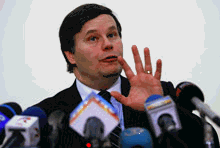
Typical street scene in Santa Ana, El Salvador. (Photo: iStock)
IMF Survey: Romania Receives Support from IMF to Counter Crisis
May 4, 2009
- IMF's Executive Board approves loan of $17.1 billion
- Program aims at cushioning effects of crisis
- Includes extra spending on social safety nets
After several years of very strong growth, Romania was hit hard last year by the global economic downturn.

Auto production in Pitesti, Romania: government will increase public investment to ensure long-term improvement in competitiveness (photo: Newscom)
CENTRAL AND EASTERN EUROPE
Now, output is falling, exports have dropped sharply, and the large capital inflows that financed the boom have dwindled. The effects of the worldwide slump have been aggravated by economic weaknesses within Romania itself.
The downturn led Romania to approach the IMF for a loan in March 2009. On May 4, the IMF’s Executive Board approved a Stand-By Arrangement in the amount of $17.1 billion. In this interview, Jeffrey Franks, the IMF’s mission chief for Romania, talks about the economic challenges facing the country, and the goals of the IMF-supported program.
IMF Survey online: Until last year, Romania was one of the fastest-growing economies in central and eastern Europe. But now, the economy has gone into a sharp reversal. What happened?
Franks: GDP growth averaged over 6½ percent per year from 2003 to 2008. This rapid growth was made possible by foreign direct investment and capital inflows, a lot of them facilitated by foreign banks that had set up subsidiaries in Romania. All this foreign capital fueled consumer spending and led to an investment boom by local companies.
"The current account deficit became very large in recent years, as imports outstripped exports."
This rapid increase in borrowing left Romania highly exposed when the financial crisis hit. Because of the global credit crunch, the country suddenly began to experience problems attracting capital from abroad. The troubles also spilled over into the exchange rate, which has depreciated by more than 15 percent against the euro since October 2008. Because over half of domestic private credit is in foreign currency, a weaker leu makes it that more expensive for consumers and companies to service their loans.
As a result of all this, growth has now slowed from an average of 9 percent during the first three quarters of 2008 to a 13 percent decline in the fourth quarter. This amounts to one of the sharpest turnarounds among emerging markets.
IMF Survey online: What made Romania’s government turn to the IMF for help?
Franks: The current account deficit became very large in recent years, as imports outstripped exports. As I’ve explained, much of this consumption was financed by private sector debt, most of it in foreign currency. The government also ran increasingly large fiscal deficits during the good times, leaving little room for maneuver when the economy turned down. And reforms to make the economy more productive and flexible had also stalled.
As conditions in the region worsened, the Romanian authorities decided to put together a comprehensive policy package to bolster their economy’s ability to withstand the crisis. In March of this year, the IMF, together with the European Union, the World Bank, and other multilateral organizations, committed to supporting the authorities’ efforts.
The IMF’s Executive Board has now approved a 24-month Stand-By Arrangement for €12.95 billion as part of a total €20 billion financial support package. Under the program, IMF money will help cushion the effects of the downturn. We will also help the government make the policy changes needed to avoid the worst consequences of the crisis.
IMF Survey online: How will the program work?
Franks: The program covers three main areas: fiscal consolidation, banking reform, and reducing inflation to help restore financial stability.

Franks meets press in Bucharest: “The government’s policies should allow Romania to avoid the worst effects of the crisis” (photo: Bogdan Cristel/Reuters)


